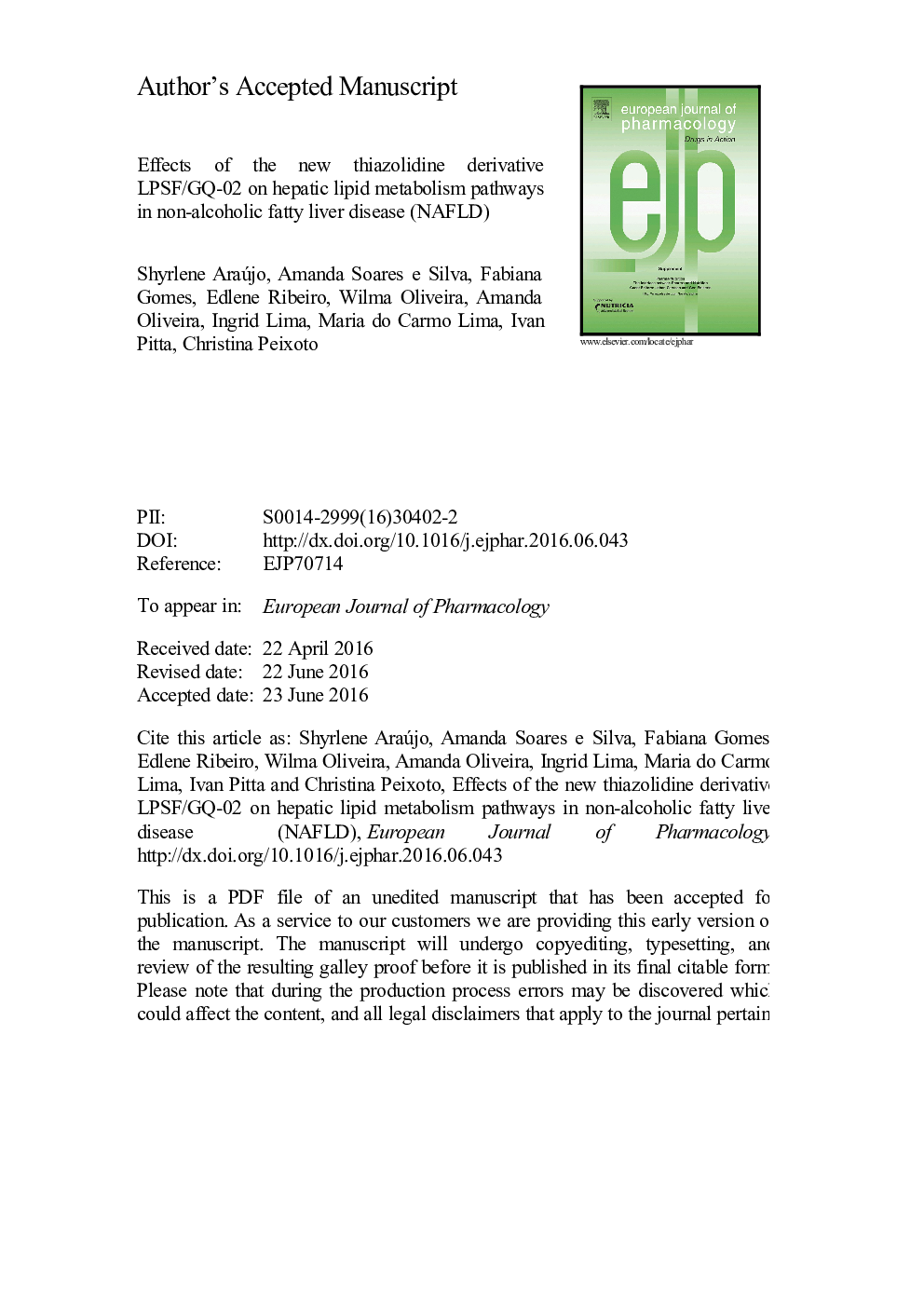| Article ID | Journal | Published Year | Pages | File Type |
|---|---|---|---|---|
| 5826626 | European Journal of Pharmacology | 2016 | 31 Pages |
Abstract
Non-alcoholic fatty liver disease (NAFLD) is considered the most common manifestation of metabolic syndrome. One of its most important features is the accumulation of triglycerides in the hepatocyte cells. Thiazolidinediones (TZDs) act as insulin sensitizers and are used to treat patients with type 2 diabetes and other conditions that are resistant to insulin, such as hepatic steatosis. Controversially, TZDs are also associated with the development of cardiovascular events and liver problems. For this reason, new therapeutic strategies are necessary to improve liver function in patients with chronic liver diseases. The aim of the present study was to evaluate the effects of LPSF/GQ-02 on the liver lipid metabolism in a murine model of NAFLD. Eighty male LDLR-/- mice were divided into 3 groups: 1-fed with a high-fat diet (HFD); 2-HFD+Pioglitazone (20 mg/kg/day); 3-HFD+LPSF/GQ-02 (30 mg/kg/day). The experiments lasted 12 weeks and drugs were administered daily by gavage in the final four weeks. The liver was processed for optical microscopy, Oil Red O, immunohistochemistry, immunofluorescence and western blot analysis. LPSF/GQ-02 effectively decreased fat accumulation, increased the hepatic levels of p-AMPK, FoxO1, ATGL, p-ACC and PPARα, and reduced the expression of LXRα, SREBP-1c and ACC. These results suggest that LPSF/GQ-02 acts directly on the hepatic lipid metabolism through the activation of the PPAR-α/AMPK/FoxO1/ATGL lipolytic pathway, and the inhibition of the AMPK/LXR/SREBP-1c/ACC/FAS lipogenic pathway.
Keywords
Related Topics
Life Sciences
Neuroscience
Cellular and Molecular Neuroscience
Authors
Shyrlene Araújo, Amanda Soares e Silva, Fabiana Gomes, Edlene Ribeiro, Wilma Oliveira, Amanda Oliveira, Ingrid Lima, Maria do Carmo Lima, Ivan Pitta, Christina Peixoto,
